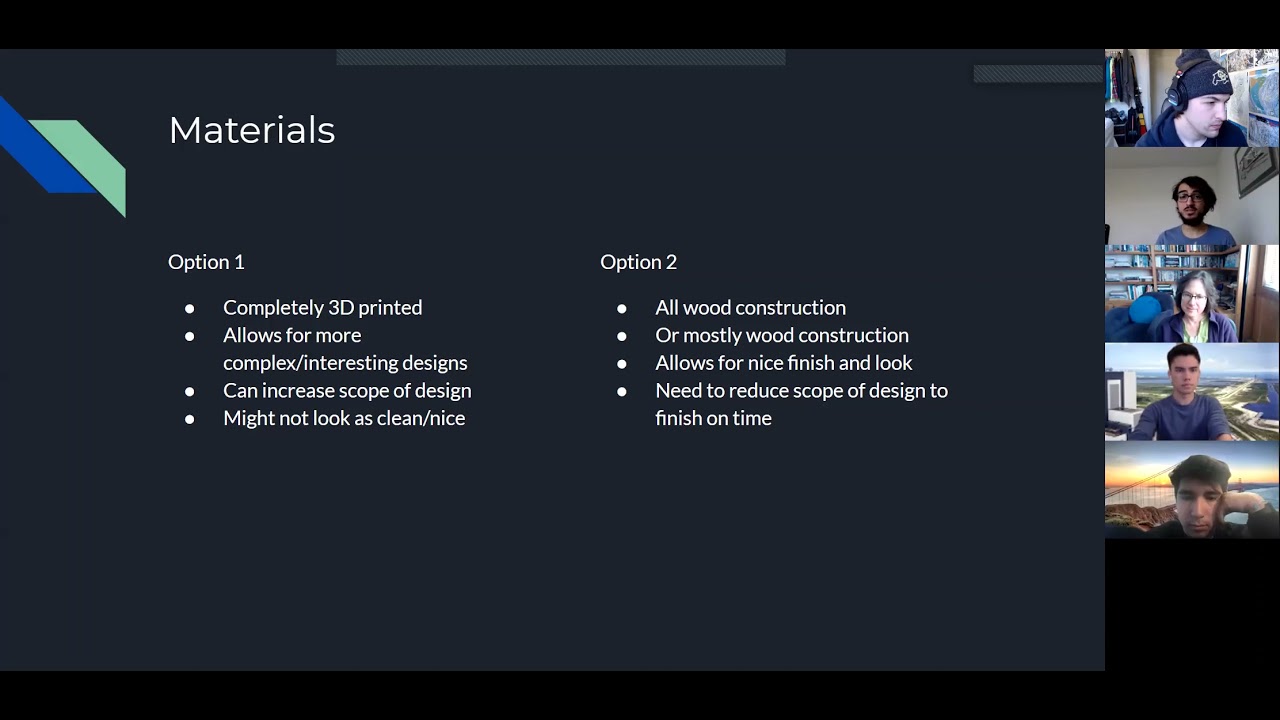This is my preliminary design for the puzzle box as recorded in class. This was early in my design phase but it was almost exactly what the final design turned out to be. While the presentation video goes into more detail, In general the design plan and construction of the puzzle box is relatively simple.
How my puzzle box works is that there are four rings and a center. The center of the puzzle box is fixed in place and of the four rings, three are used to solve the box whereas the other ring is used as a distraction and for aesthetics. There are three teeth on each drawer necessary to the locking mechanism. Each of the teeth correspond with the three outer rings, since there is a small barrier connected to each of the rings inside the box, the teeth will hold the drawer in place as the barriers are in front of the teeth. Only once the individual gaps of each of the rings are in place above the teeth can the drawer be pulled out with no resistance. Since there are two drawers and I didn’t want one combination to open both drawers, I set the teeth on the drawer to be off centered. When the teeth of the drawers are off centered, this allows the rings to turn 180° from the first combination without opening the other drawer. So when turned 180°, if it were originally in the bottom left of the circle in relation to the center, that groove that was used to open the first drawer would now be in the upper right. The reason the combinations are different is because the second drawer will require the curved grooves to be in the top right whereas the first would be the bottom left. This means they would require completely separate combinations.
Materials:
Brush
Lacquer
320 grit sandpaper
Tack cloth
Wood
Brass
Satin
Common woodworking tools
Hacksaw
Wet/dry sandpaper
The main construction will be out of wood, preferable walnut or cherry wood. These pieces will be cut out and glued together with wood glue. Then brass will be inlaid into the wood before applying the stain and lacquer to give the wood a gloss finish.


2 Comments. Leave new
Hi Stephen, I think this puzzle box is a really awesome idea, and I saw from the video that you are taking inspiration from the Japanese puzzle box so that is also very cool. I also saw that you talked about having the puzzle parts seem like they can’t move, so I was wondering if it would be solvable without a pre-known solution?
Hi Stephen, I already attended the critique, but I wanted to reiterate how cool this project has the potential to be. The puzzle aspect of the design is one that I think can be really unique and add a level of interactivity that’s so much better than just a simple box that opens and closes. I’m curious to see how it could turn out and how it really feels to handle it once it’s made.